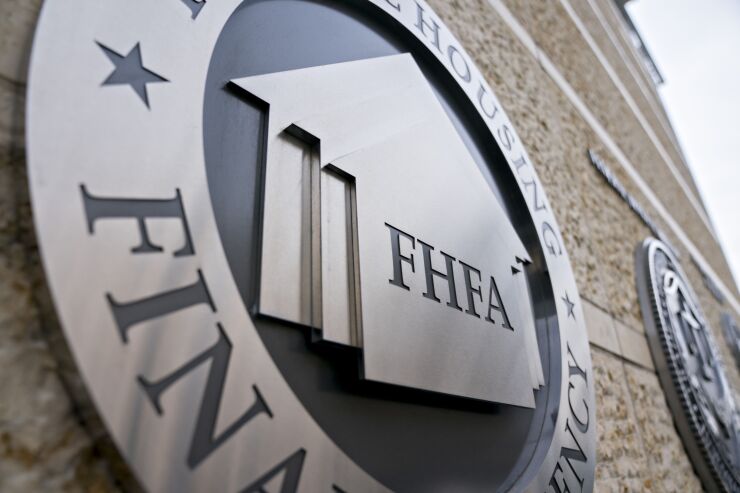
The Federal Housing Finance Agency (FHFA)
Over the last year, FHFA and the Home Loan banks listened to a chorus of voices that told the FHFA that they hoped for more, not less, from the banks.
Now, FHFA has offered 50 recommendations that represent its vision for the future of the Home Loan banks. Some of these recommendations address elements that are already part of our operational fabric — like continually measuring the creditworthiness of our members when making advances and maintaining open lines of communication with financial regulators in both normal times and times of market stress. Others address areas where the FHFA can initiate rulemaking to promote increased use of affordable housing products by Home Loan bank members and provide greater flexibility for the banks to innovate and respond to evolving economic environments.
Whatever changes FHFA may pursue in the wake of its report, the agency should take care not to disrupt or complicate the ability of Home Loan bank members to access the
Some observers, including several Wall Street analysts, have suggested that FHFA's vision could result in higher funding costs and more uncertainty for lenders, particularly during times of market stress. Higher funding costs, of course, translate to higher borrowing costs for consumers, which leads to real economic pain. Higher funding costs are also likely to be more detrimental to smaller financial institutions that generally do not have access to as many sources of cost-efficient capital.
Moreover, if FHFA makes it harder for our members to access funding, it will undermine our ability to support housing finance, affordable housing and community development. For example, imposing a 10% ongoing mortgage asset test could not only disenfranchise some current members, but it would inject a disruptive level of uncertainty regarding the reliability of the Home Loan banks to meet their members' funding needs. This proposal is completely unnecessary since almost every dollar of collateral pledged to a Home Loan bank is mortgage- or community-development-related collateral. A 10% ongoing mortgage asset test is a solution in search of a problem.
A key element of FHFA's report focused on housing and community development. We take our mission to promote affordable housing extremely seriously and we welcome FHFA's stated commitment to support our development and implementation of additional pilot programs to address needs in our respective markets. Today, the Home Loan banks are the largest private contributor to affordable housing programs in the country. Upon hearing feedback from stakeholders during FHFA's review, we began taking steps toward delivering more impact against our mission to support affordable housing and community investment while waiting for FHFA's report.
The 30-year average declined for the fifth consecutive week, as purchase demand picking up at the same time, according to Freddie Mac.
Earlier this year, each of the 11 Home Loan banks committed to increasing their required affordable housing contributions to at least 50% more than the statutory minimum. Many Home Loan banks have implemented new pilot programs this year to further address the needs of their districts. This additional commitment ensures even more critical resources are delivered to solve what has become one of the country's most pressing, systemic issues. In fact, we expect to contribute nearly $1 billion toward affordable housing and community development this year.
We further salute FHFA's desire to address the regulatory burdens associated with the Affordable Housing Program (AHP) and the ability of our Community Development Financial Institution members to access their Home Loan banks. This summer, we increased our dialogue with CDFIs to brainstorm ways to overcome the regulatory and risk-related constraints that inhibit them from greater access. We also engaged with Native American communities to identify ways to increase support.
The Home Loan banks are also committed to providing more information about their efforts. In June, the system published its first Corporate Social Responsibility Report, and we intend to report this type of information each year to provide more insight into our efforts to support affordable housing and community development.
This work reflects our willingness — and frankly desire — to make sure the Home Loan banks continue to operate in a safe and sound manner and remain in a position to have meaningful impact through reliable access to funding to support housing finance, affordable housing and community development.
The beauty of our form of government is that while the types of recommendations contained in FHFA's report may help advance discussion, their implementation is far from inevitable. The Administrative Procedures Act governs how federal regulators may propose and establish regulations. It is important to have the same high level of transparency the FHFA demonstrated over the last year and ensure all interested parties have a voice and stakeholders can influence how the FHFA proceeds. Formal rulemaking versus the use of the supervisory process — supervisory letters, guidance and examination findings — will provide transparency and opportunity for stakeholder input.
FHFA's report has already cast a shadow of uncertainty over the financial marketplace. FHFA's next steps will impact how our members and their regulators view the value of their voluntary membership and will ultimately impact the flow of credit throughout the economy. They will also affect the level of support Home Loan banks provide for affordable housing and community development.
As FHFA proceeds to "bolster and improve" Home Loan banks, it must not only be mindful to do so in sunlight to ensure Congress and affected stakeholders help determine the path forward, but it must also never lose sight of the fact that the reliable liquidity we provide has served our members and the economy very well for nearly 100 years.





